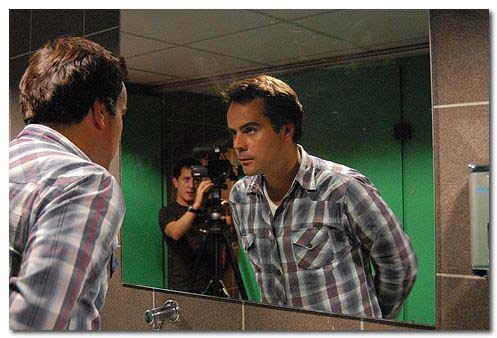Paris Biennial,
Oct 01, 2006 - Mar 01, 2007
Paris, France
Paris Biennale
by Manuel Cirauqui
Georges Méliès once stated that cinema was characterized by its capacity to contain all the other forms of artistic production. This assertion has not only turned out to be valid for what we call art today, but has also become more radical: it is true of all the forms of production. Whether artistic or not, this assertion recurs within each artistic genre, as art itself, as a storified or destorified abstraction, as a quote that is more or less out of context. In keeping with this line of reasoning, the question of what defines an artistic project - such as Closing Time, for example - comes giddily close to the Heideggerian question of what a thing is. Closing Time began as a reaction to the ambiguity of a proposal, in this case a proposal by the Paris Biennial: specifically, drawing up a multiple-site project within the framework of the Biennial still charmed by values such as laterality or dematerialization. The response of Iñigo Cabo, who was responsible for Closing Time, was in some way a gesture of withdrawal, of re-flection, or of suspicion. Carrying out a project on the value of projects, a laboratory for reflection on the influence exerted on all artistic projects by the socially preformatted devices for art - what the name "Closing Time" in fact expresses, i.e., "curfew," or literally, "closing/closure hour/time." In this sense, Closing Time is an expanded update of the early reflection of conceptualism on institutional settings: settings of anticipating, forecasting the social impact of art and therefore neutralizing it. Such was the general framework guiding the conferences and workshops that were held simultaneously in Paris, Bilbao and Quito throughout the month of October 2006. Following three specific thematic guidelines, artists and theorists came together in conferences and workshops in order to reflect on the curfew as a cultural device, as an a priori of art. The focus in Paris was on "Cinematography," in Bilbao on "Literature", and in Quito on "Legends," all understood as rich fields of production and thought, potentially liberating on the one hand but excessively visited on the other as mere objects of intellectual tourism. The three concepts provide the key for the project’s stance in regard to what was called, within that framework, "anticipation of curfew strategies." As was stated in the Closing Time web page presentation, "the discontinuity of imaginary time" is highlighted by "the linearity of the real." The idea of discontinuity was made use of by Andrés Barriga to articulate his reflections in his lecture on "Legends and Discontinuity," given in Quito on October 9. According to this philosopher and documentary filmmaker, "Legends are the perfect means of finding the real components of cinema, that is to say their blend of fiction and reality." Seen in that light, fiction is the common thread in the three headings mentioned above. Literature (written fiction), cinema (image-fiction) and legend (oral fiction) are the three modes or genres for producing short circuits in the surface of real order. This idea lets us see how the lecture sessions were approached last October, and how they were integrated into what we could refer to as a documentary fiction project, whose climax and point of maximum intensity was to be the launching of the film, featuring the same title as the project, in the spring of 2007.
|











